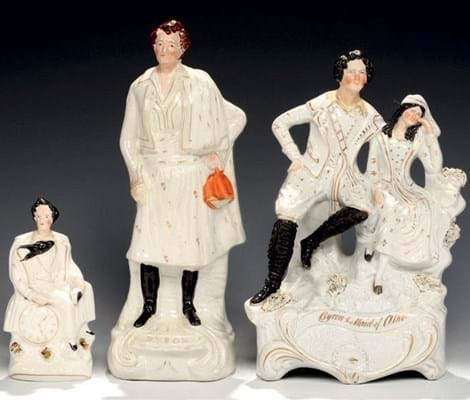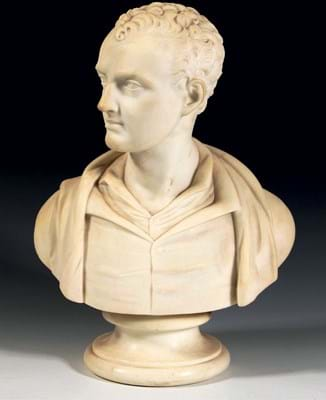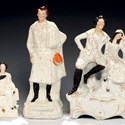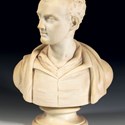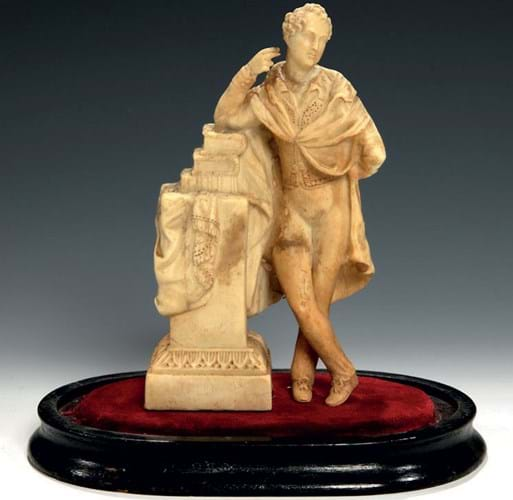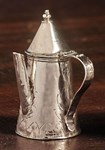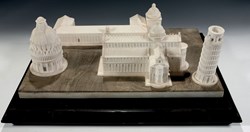Indeed, for some buyers they are the preferred choice in that they offer lots with similarly good provenances with the advantage of pre-selection by a good ‘eye’.
A number of such collections met with considerable success in the provinces at the start of the year with the front-runner being the Harold Ward sale at Mellors & Kirk (20% buyer’s premium) in Nottingham on February 6-7.
The 850 lots from Ward’s Grantham home, a large cottage rather grandly named Manthorpe House, attracted worldwide bidding from New Zealand to New Hampshire and from Kolkata to Chile. It produced “a phenomenal level of interest”, said auctioneer Nigel Kirk after the sale where almost everything sold to a total of around £500,000.
There were paintings (also see last week’s Art Market, ATG No 2380) some good furniture, including a pair of early 19th century mahogany pier tables which went over the phone at a 10-times estimate £10,000, and a number of rare collectables.
The key to success, however, was Ward’s passion for all things Byronic, coupled with a healthy level of bidding on thesaleroom.com.
Fan clubs
In his day George Gordon, Lord Byron (1788-1824), the great Romantic poet, inspired the sort of fervour that the 20th century experienced as Beatlemania.
Today there are societies dedicated to his memory in the UK and US, members of which competed at the sale against enthusiasts from Greece, where Byron is a national hero because of his passionate support for the country’s war of independence from Turkey.
To a large extent, estimates were of the ‘here-to-sell’ variety. Nevertheless, bids in some cases were quite startling.
“Byron collectors hardly consider money when they want a piece,” said Kirk. “To be honest, I feel that way about Coleridge. If I went to a sale such as this with Coleridge as the focus I could bankrupt myself.”
From the safety of the rostrum he saw a lot catalogued simply as a 19th century marble bust of Byron – ‘dusty but in good condition with a tiny edge chip’ take off. Pitched at £700-900, the 18in (45cm) piece sold at £28,000.
Possibly at least two bidders believed they could identify the sculptor but the magic of Byron for this audience was evident in the reaction to two 19th century Copenhagen biscuit porcelain models after the renowned Danish sculptor Bertel Thorvaldsen (1770-1844).
Each had suffered minor damage and was estimated at £100-150. The 10in (25cm) statuette of a seated, brooding Byron sold at £2500. A 14in (35cm) bust of that other iconic hero of the time, Napoleon Bonaparte, impressed Eneret, sold at £320.
Other renditions of the poet included a wax statuette incised J Cave London 1834. Little is known of the artist who was working c.1820-50 but this example of his work showing Byron in classical garb leaning on a pedestal was later produced in parian. Estimated at £100-200, it sold at £4800.
Among the porcelain was a c.1820 Empire-style, French vase. Painted with a portrait of Byron, the 10½in (27cm) tall vase with burnished gilt handles was also pitched at £100-200 and sold at £4800.
A humbler medium boosted by Byron was a job lot of Staffordshire flatbacks. Comprising two c.1848-50 portrait figures of the poet standing 8¼in/(21cm) and 15¾in (40cm) tall, and a 13in (33cm tall parian group of Byron and his poetic heroine the Maid of Athens, it made £3000 against a £100-200 estimate.
Daughter’s genius
Byron’s daughter, Ada Augusta, had a genius all of her own although only in recent years has the work of Countess Lovelace been recognised.
Not only was she a key aide to Charles Babbage on his Analytical Engine, but she saw further than her tutor and published the world’s first algorithm.
A letter in the Ward collection concerned a more domestic matter sent some time between 1835-41 about a talented musician she had heard at her St James’ Square home. Estimated at £200-300, it sold at £3500.



